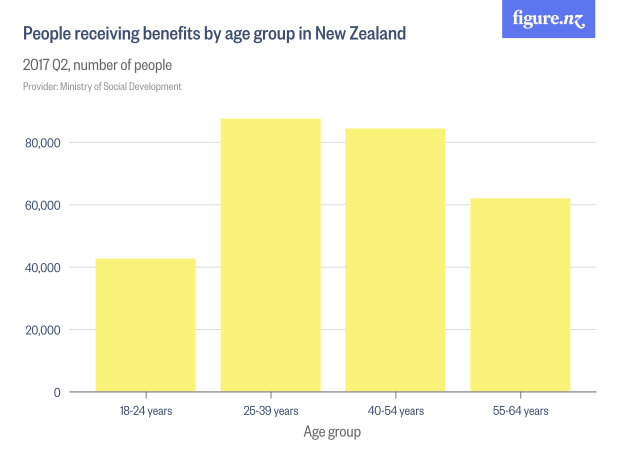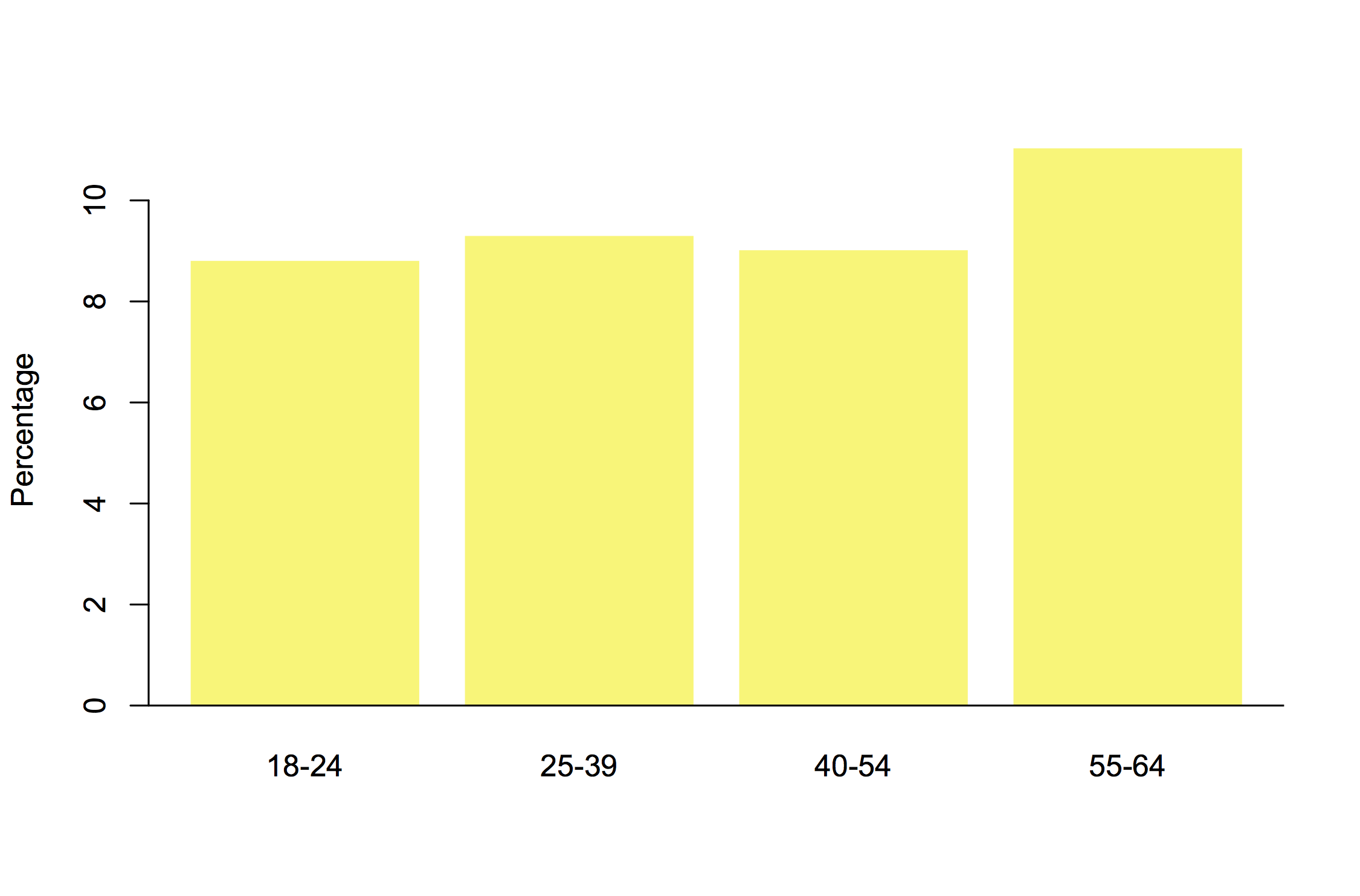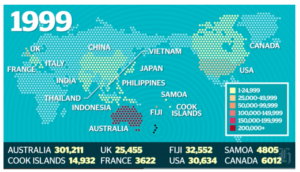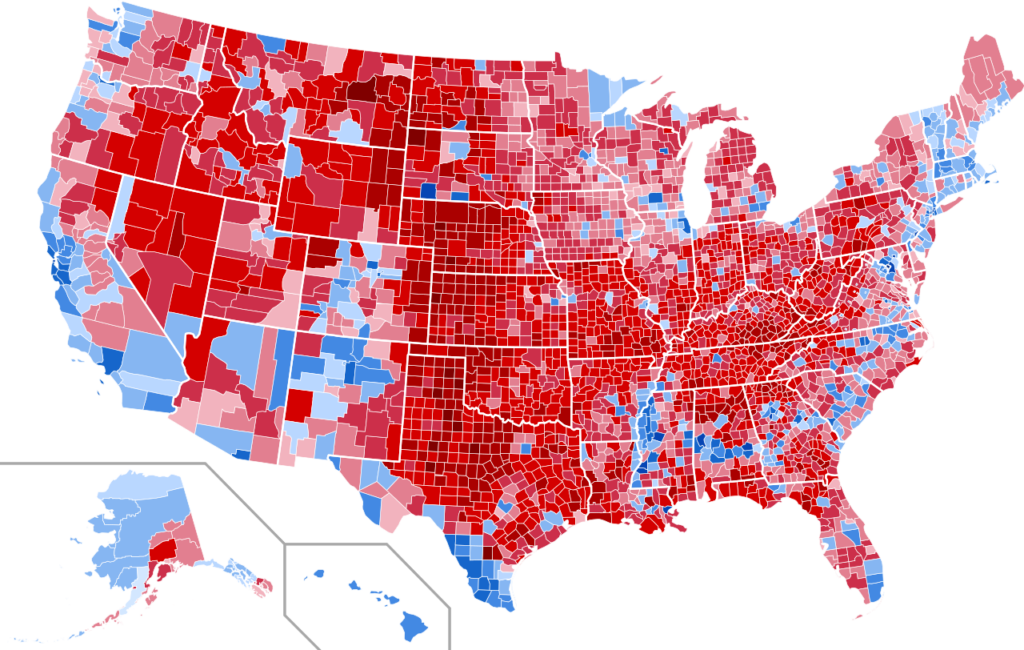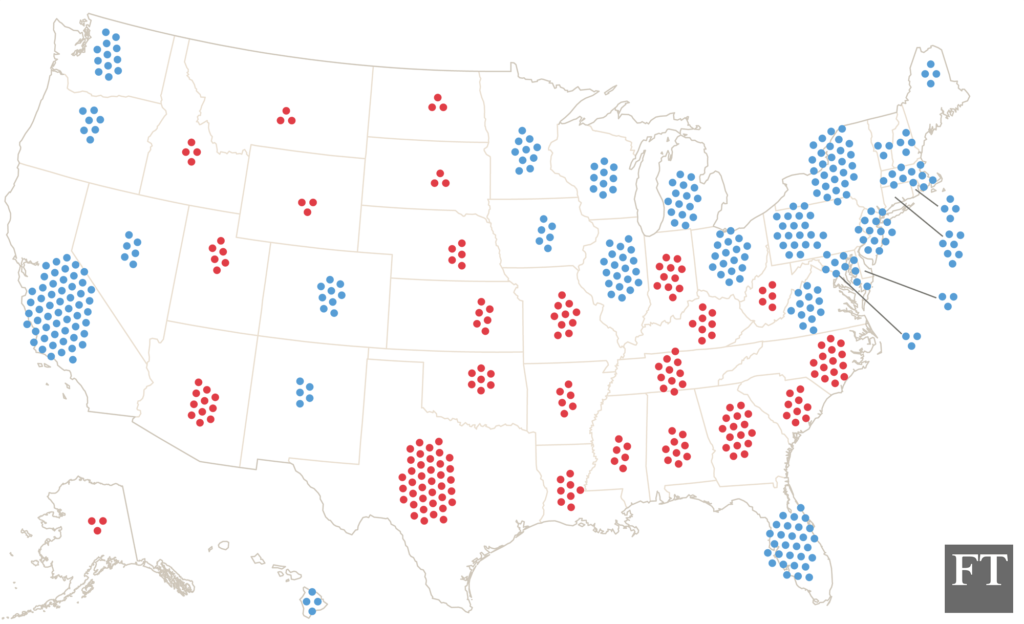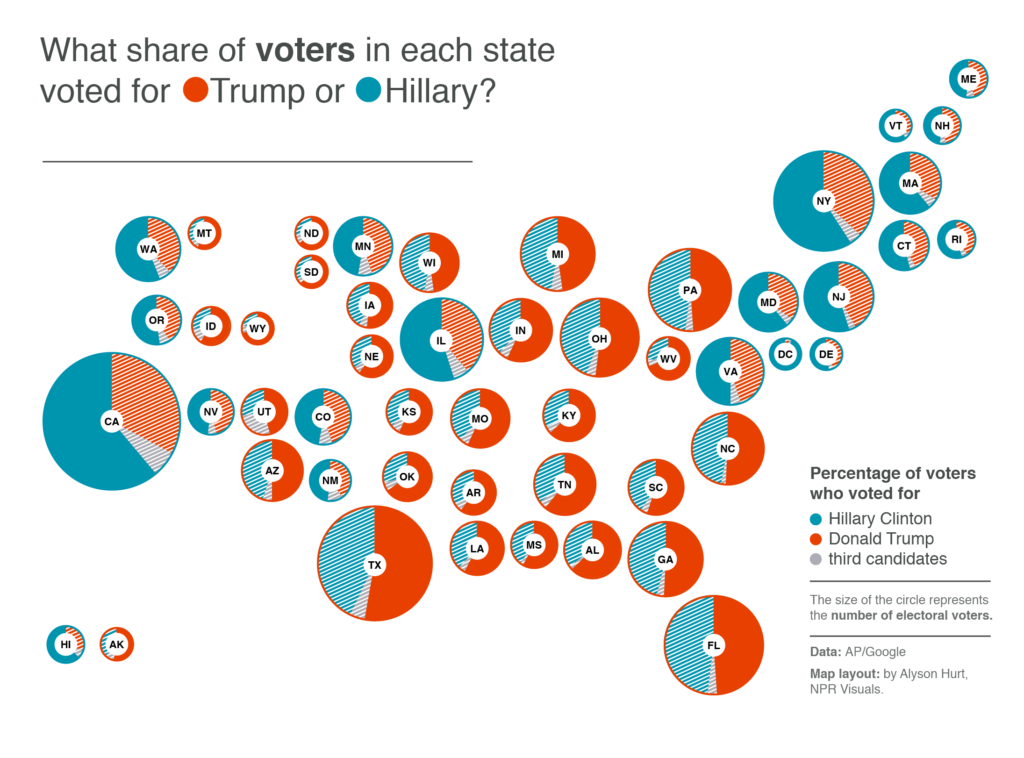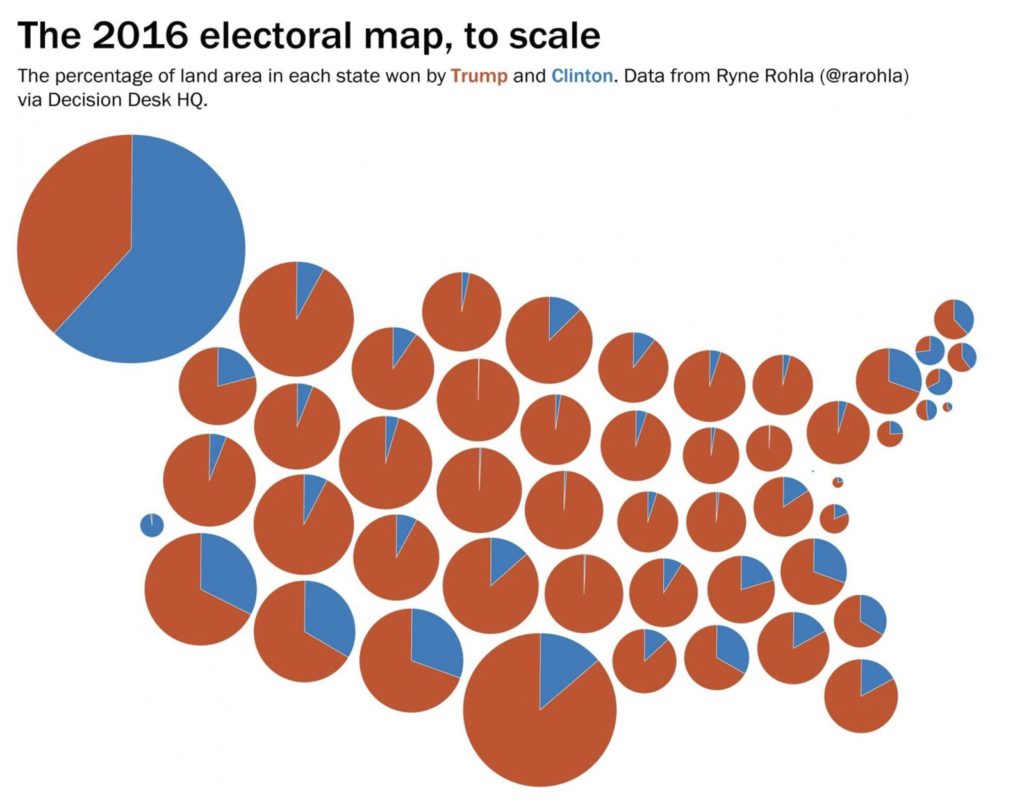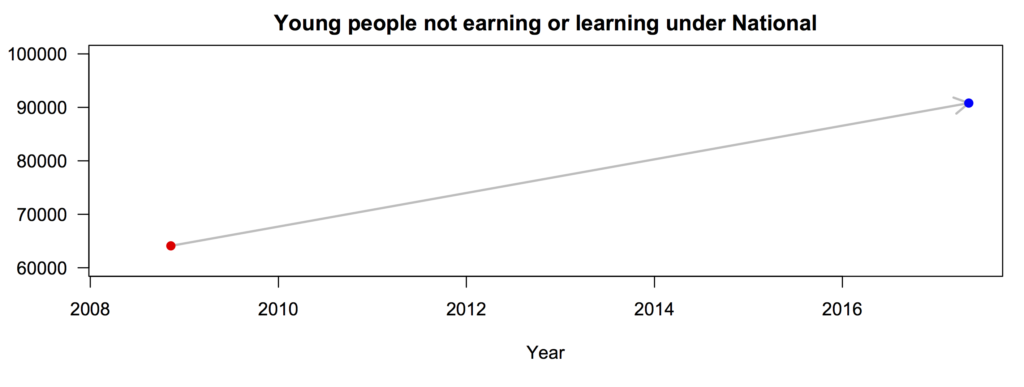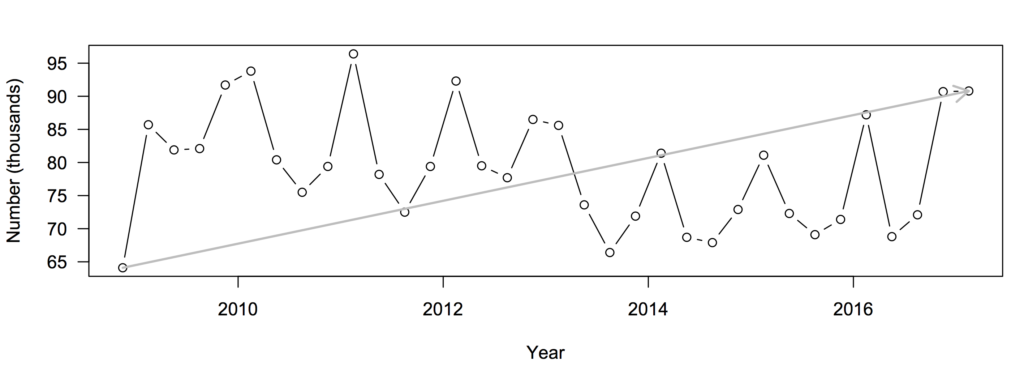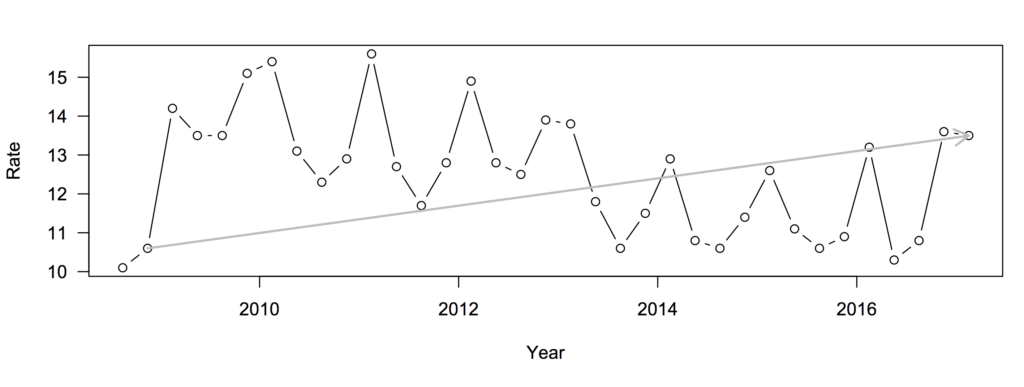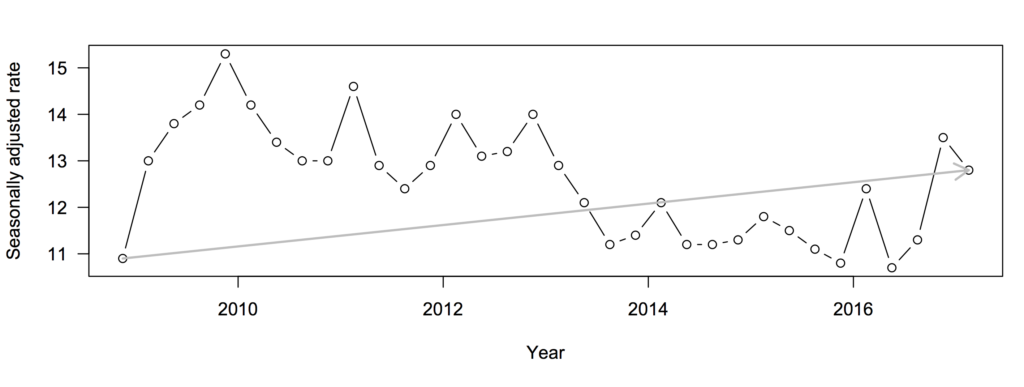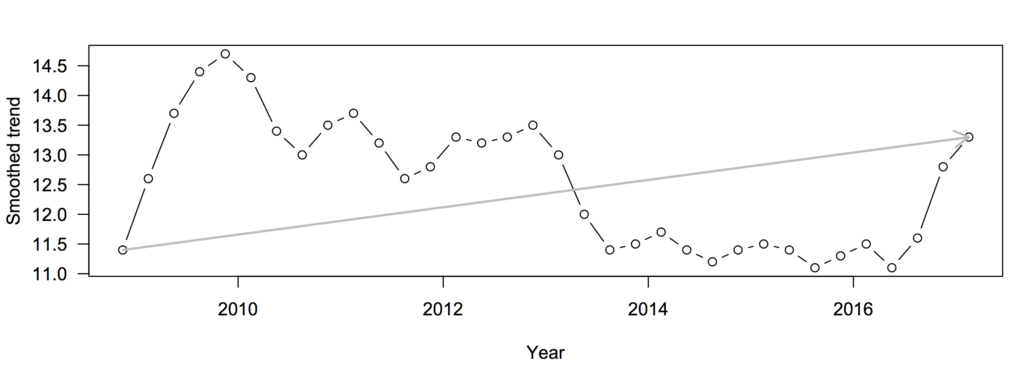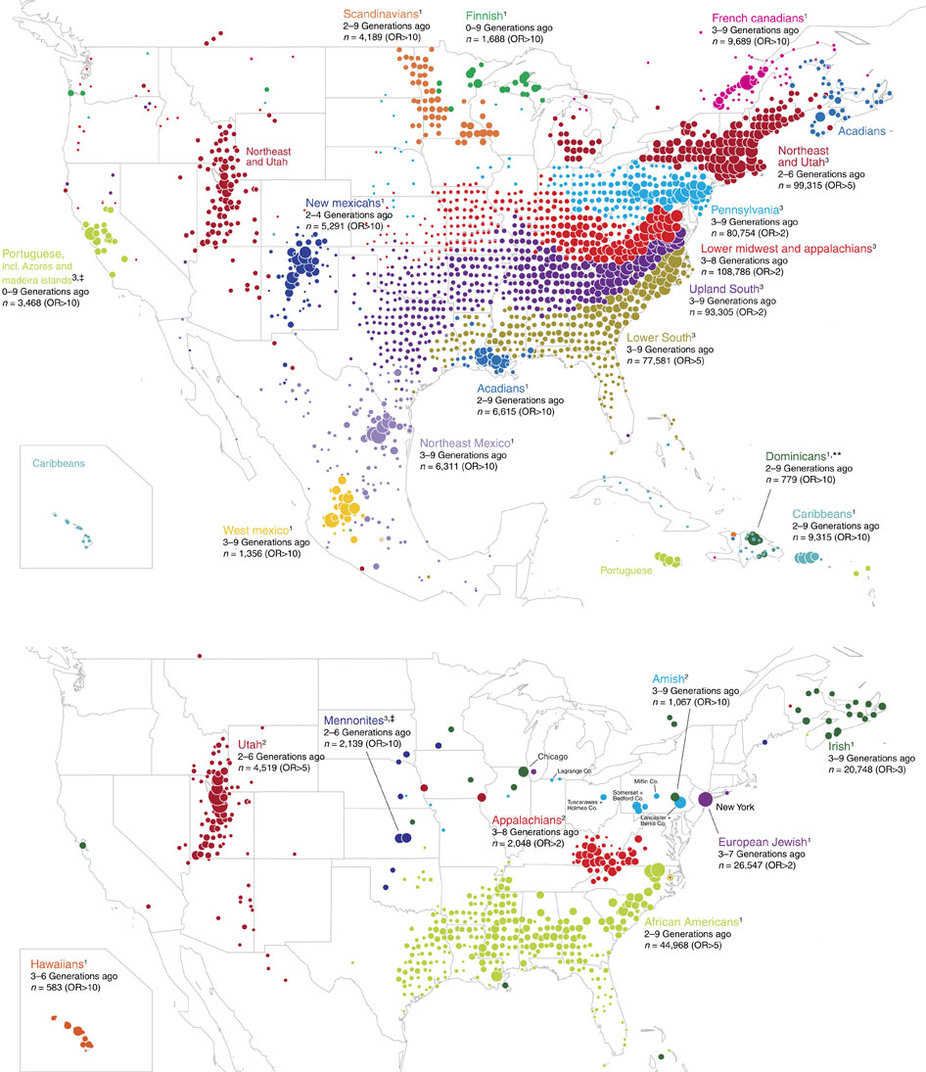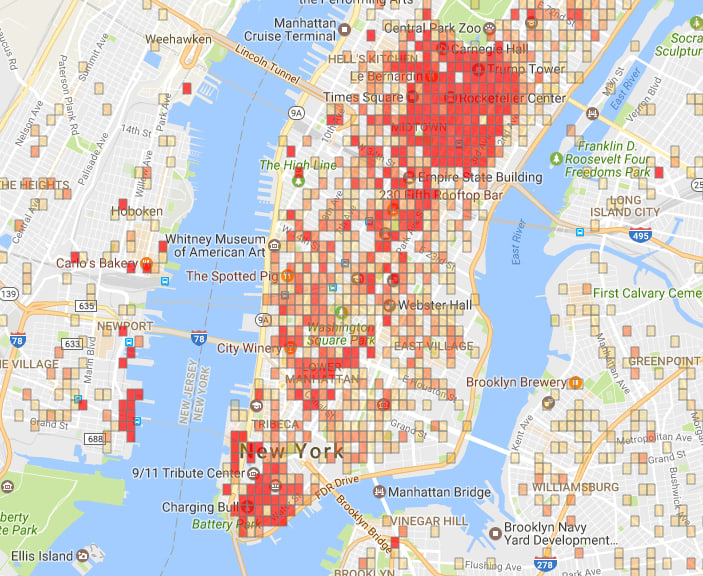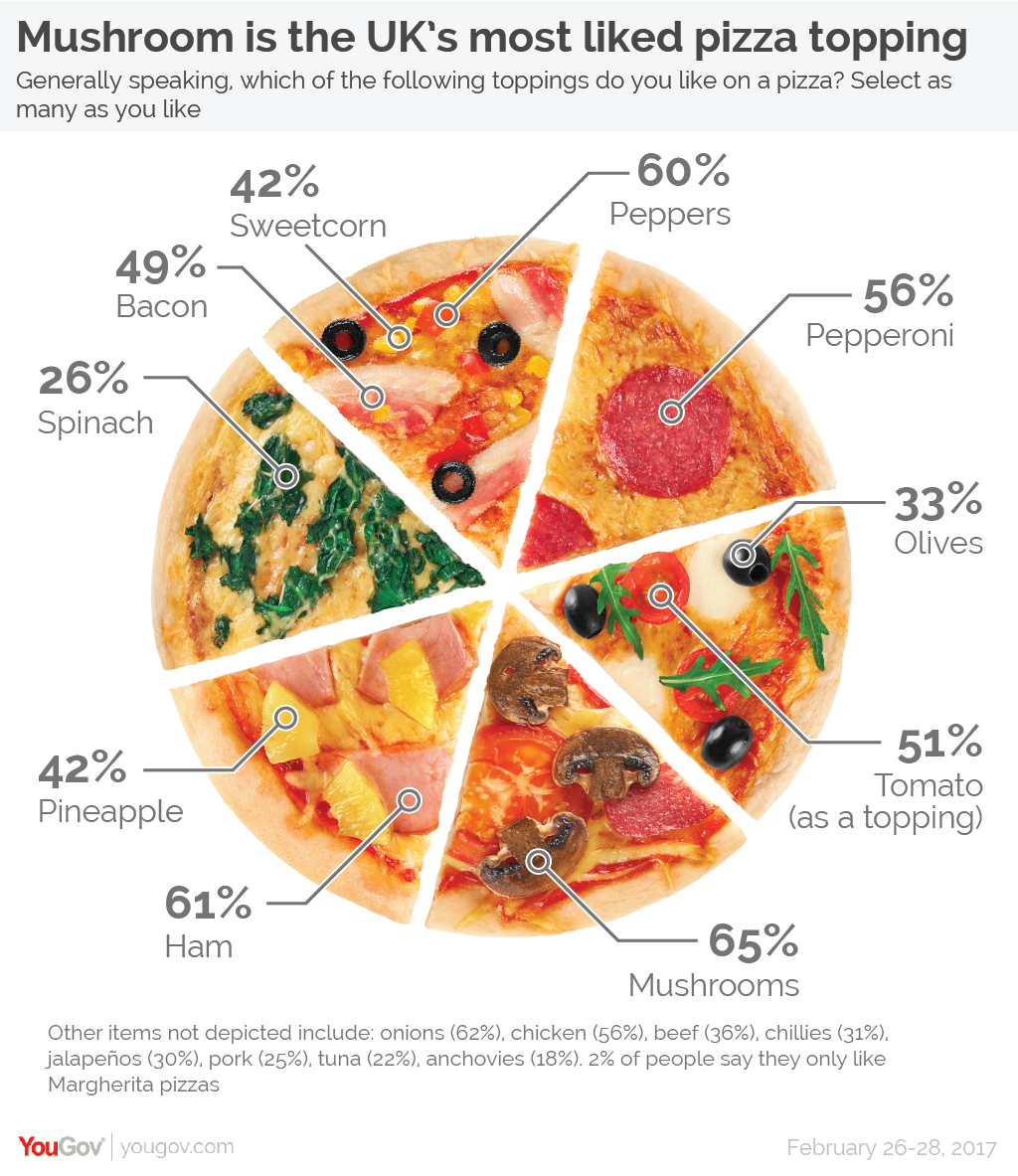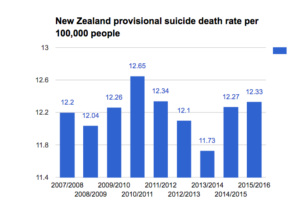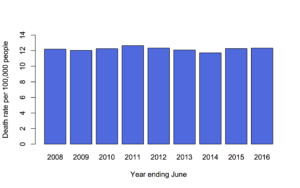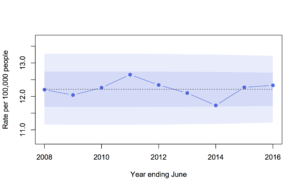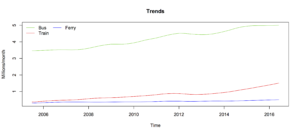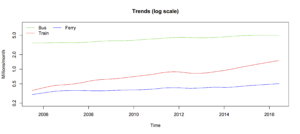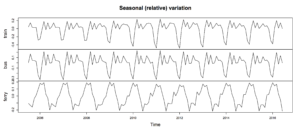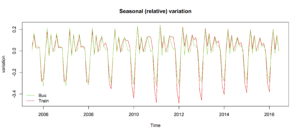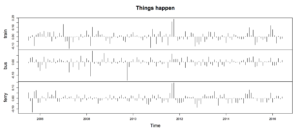Different sorts of graphs
This bar chart from Figure.NZ was in Stuff today, with the lead
Working-age people receiving benefits are mostly in the prime of our working life – the ages of 25 to 54.
The numbers are correct, but the extent to which the graph fits the story is a bit misleading. The main reason the two bars in the middle are higher is that they are 15-year age groups, when the first bar is a 7-year group and the last is a ten-year group.
Another way to show the data is to scale the bar widths proportional to the number of years and then scale the height so that the bar area matches the count of people. The bar height is now counts of people per year of age
This is harder to read for people who aren’t used to it, but arguably more informative. It suggests the 25-54 year groups may be the largest just because the groups are wider.
We really need population size data, since the number of people in NZ also varies by age group. Showing the percentage receiving benefits in each age group gives a different picture again
It looks as though
- “working age” people 25-39 and 40-54 make up a larger fraction of those receiving benefits than people 18-24 or 55-64
- a person receiving benefits is more likely to be, say, 20 or 60 than 35 or 45.
- the proportion of people receiving benefits increases with age
These can all be true; they’re subtly different questions. Part of the job of a statistician is to help you think about which one you wanted to ask.
